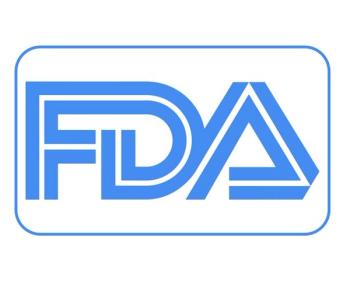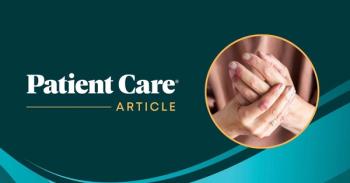
Doctors Faulted for Poor Instructions on New Prescriptions
LOS ANGELES -- Physicians prescribe medications all too often without clear instructions about how to use them and what to watch out for, according to an observational study.
LOS ANGELES, Sept. 25 -- Physicians prescribe medications all too often without clear instructions about how to use them and what to watch out for, according to an observational study.
Physicians offered adequate directions for less than 60% of all new medications prescribed and informed patients about duration of use and adverse effects only about a third of the time, found Derjung Tarn, M.D., Ph.D., of the University of California Los Angeles, and colleagues.
This study demonstrated "spotty" physician compliance, with a likelihood of poor patient compliance, about the how and why of new medication prescriptions, the researchers reported in the Sept. 25 issue of the Archives of Internal Medicine.
The overall quality of doctor-patient communication was poor and could contribute to patient misunderstandings, worsening disease, failure of treatment, adverse effects, drug overdose, unnecessary hospitalization, and higher health care costs, the researchers wrote.
The study, conducted in 1999, combined patient and physician surveys with transcribed audiotaped office visits from 185 outpatient visits in which physicians wrote 243 new prescriptions. The medications included 46 cardiovascular drugs, 42 ENT preparations, 35 analgesics, 35 antibiotics, 21 dermatologic creams, 21 psychiatric drugs, and 11 pulmonary medications.
The study included 16 family physicians, 18 internists, and 11 cardiologists in two Sacramento, Calif., health care systems. Patients' mean age was 55, half were male, most had some college education, most were white, just more than half were Kaiser Permanente patients, and 75% had a prior visit to the prescribing physician.
The investigators coded the type of communication, on the basis of five key elements: the name of the drug, the purpose or justification for taking it, the duration of use, adverse effects, and the number of tablets or sprays plus the frequency or timing of ingestion.
Overall, the physicians fulfilled a mean of 3.1 of the five expected elements of communication when initiating new prescriptions, the researchers reported. This indicated that they had provided only 62% of the necessary elements of new medication prescribing, they said.
Physicians stated the specific medication name (brand or generic) for 74% of new prescriptions and explained the purpose of the medication for 87%.
However, adverse effects were addressed for only 35% of the medications and how long to take the medication for 34%. Physicians explicitly instructed 55% of patients about the number of tablets to take, and explained the frequency or timing of dosing 58% of the time. Explanations were particularly poor for over-the-counter preparations, the researchers said.
There were significant differences among the medication classes, ranging from 2.7% for dermatologic preparations to 3.7% for psychiatric medications, 3.5% for pulmonary drugs, and 3.3% for cardiovascular drugs, the researchers reported. For example:
- Generic or brand names were stated for 95% of psychiatric medications but for only 54% of antibiotics.
- Information about duration of medication ranged from 17% for cardiovascular drugs to 54% for antibiotics.
- However, adverse-effect counseling ranged from less than 15% for antibiotics and dermatologic drugs to more than 60% for psychiatric and cardiovascular medications.
- Directions about frequency of medication ingestion ranged from 46% for antibiotics to more than 80% for psychiatric and pulmonary drugs.
There were no significant differences between primary care specialists and others, suggesting that the better scores for cardiologists' patients may be because of factors other than differences in physician communication, the investigators said.
Although patients may seek information from a variety of sources, including pharmacists and medication package inserts, information offered by physicians is not adequate, the researchers emphasized.
For example, patients not educated about the expected duration of use may not realize that medications for chronic conditions need to be refilled. Furthermore, patients tend to be concerned about a drug's adverse effect, whereas adequate physician discussions could allay fears.
The researchers provided the following example of inadequate prescribing:
Physician: "If I'm writing antibiotics, are you allergic to penicillin? Patient: "No, I'm not allergic to anything."
Physician: "Okey dokey."
It is unclear what medication is being prescribed, the investigators commented, and there was no instruction about how to take the medication or about potential adverse effects. Lack of instruction, they added, might lead patients not to complete an antibiotic course and may be a particular problem for patients who have difficulty reading medication-container labels.
In reviewing the study's limitations, the investigators noted several factors, including a shift in medication conversations because of societal and insurance changes since the 1999 data were collected.
Other issues included the presence of a tape recorder, which may have stimulated increased physician counseling. Computation of the scores may be conservative since physicians could receive credit even for vague statements, and unless it was explicitly mentioned during the office visit, it was not possible to learn whether patients were given written information about their new prescription.
Finally, the researchers said, the findings do not capture environments where heath care systems employ pharmacists or nurses to educate patients about medication use.
"This study provides evidence of suboptimal patient counseling," Dr. Tarn said. However, he added that efforts to promote better communication need to consider the trade-offs that may occur in time-compressed visits.
"More research is needed," he said, "to investigate how much time physicians spend educating patients about new medications and whether better communication is associated with more appropriate patient medication use and health outcomes."
Newsletter
Enhance your clinical practice with the Patient Care newsletter, offering the latest evidence-based guidelines, diagnostic insights, and treatment strategies for primary care physicians.

















































































































































































































































































